Dear Friends,
What are the uses of wonder? In what way can wonder expand our sense of ourselves or bring us into intimacy with the world around us?
I gave this talk on our recent summer retreat. It’s a kind of magic carpet ride that tells the story of Vimalakirti and Shariputra and ends in what the poet Galway Kinnell called a “tenderness towards existence.”
— Sal (aka Gessho)
P.S. For — please consider this a very belated response to your prompt to consider the way books enchant!
Video: On Wonder and Emptiness
YouTube video here. Note: the audio is a bit low. If you have difficulty hearing I recommend the podcast version.
Podcast
As an alternative, you can listen to the podcast version of this talk here.
Transcript: On Wonder and Emptiness
(This transcript has been lightly edited)
Hello! My name is Gessho, and I'm a senior student.
I want to extend a special welcome to those who are joining us online, either right now, practicing along with us from home, or in some future moment.
You've been on my mind as part of our continuous sangha. As we were practicing the ceremony for this, just before in liturgy training, I was playing the part of the “Dharma speaker,” and I unwrapped this, and I saw the black folder which we use, and I opened it up, and I thought this is the perfect Dharma talk [shows the empty interior to everyone].
I'm never going to do better than that, but I guess I'll try.
Wonder
Today, I want to talk about wonder.
The work that we're studying over this ango [intensive practice period] is the Vimalakirti Sutra. It's full of wondrous miracles.
Shinryu Roshi, in his talk, gave us some ways of thinking about how that might relate very directly to our own lives. I'm going to throw in a slightly different but related path. So for those of you who haven't read it yet, I just want to briefly summarize the central story of the Vimalakirti Sutra.
Vimalakirti was a wealthy man, a householder. He lived in a city called Vaishali and he was immeasurably wise.
He is a Bodhisattva. Not only is he a Bodhisattva, but he is the wisest of all the Bodhisattvas, at least for the purposes of this text. He surpasses everyone in wisdom.
And he uses skillful means. He uses upayas as ways of bringing people to the Dharma. And as an upaya — as a skillful means, as a pretext for talking about the great themes of the Bodhisattva way of emptiness, and of non-duality, which are the themes of this text — he causes himself to fall ill.
The Buddha, as Shinryu told us, has a great gathering of beings at his forest glade where they're all practicing, tens of thousands of beings of all kinds. And he telepathically knows that Vimalakirti has fallen ill. So he tries to get his disciples and Bodhisattvas to go visit the sick man.
And after some hemming and hawing, they do. And Vimalakirti also telepathically aware of this.
He’s like, oh, they're coming, and magically causes everything to disappear from his room, all his attendants and furnishings. So it's just him alone in his sick bed.
And all these beings arrive.
And somehow, mysteriously and magically, though there are tens of thousands of them, even the elephants, neatly, they do not impede each other. They do not make the room grow so big as to cause trouble in the house or the town.
They're all there, gathered around Vimalakirti's sick bed.
Then comes the moment which I found myself really responding to in this story, this particular time around. Shariputra, who is the Buddhist chief disciple, is looking around at all these beings of all kinds, gods and bodhisattvas and disciples and garudas, and he thinks to himself, There are no chairs here. Where is everybody going to sit?
He just has the thought.
As he thinks this, Vimalakirti magically hears him, and he turns and says, “Shariputra, did you come for the dharma? Or did you come for a chair?”
Shariputra feels, I think, much as one imagines he would.
So he's like, “oh no, no, I came for the dharma! Not for a chair!”
After Shariputra is admonished for a little while, Vimalakirti relents and causes chairs to come to the space.
The Chairs
These are not like folding chairs. These are giant golden lion thrones from another Buddha land. And they're really big. They're really big.
They are thousands of miles high.
And somehow, magically, they don't impede the space. All the bodhisattvas who are very advanced immediately make themselves big enough to fit in the chairs, and they sit down.
But Shariputra, like a number of other beings in the room, can't do that.
And he's like, sorry, Vimalakirti, but I can't climb up to this chair. And Vimalakirti says, oh, well, if you bow down to the Buddha of the land where we got these chairs, the Buddha of Costco, the Buddha of Walmart, you'll be able to climb up. And so he's able to sit.
But it doesn't say that he gets as big as the chair.
It doesn't say. So I imagine him regular size, our size. And he's sitting on this chair that's thousands of miles high. I mean, space starts about 6,000 miles above our heads. So it's pretty high.
And he's our size on a big giant seat that could probably sit a hundred thousand or a million Shariputras. I can just picture him kind of dangling his legs and peering down.
All this caused me to become curious about a couple of things in this sutra. One is, why Shariputra? He appears quite a few times in this same way in various stories — it would be really fun to have long enough to tell all those stories. But why is it Shariputra who's put in this position?
Also, why all the wonder? Why the gigantic chairs, the magic, and the space that folds in on itself and expands as you need it?
Shariputra
I came to feel that the answer to both of these questions was the same thing, which is where we're going.
So Shariputra was the Buddha’s chief disciple. He and his childhood best friend, whose name was Maudgalyanya, were the heads of the male part of the sangha (the Buddha’s community). There were two women, Khema and Uppalavanna, who had the same role in the female sangha.
Shariputra was the was the first person that the Buddha permitted to ordain others. So, you can see him welcoming people into the Sangha and getting them set up, finding them chairs and food, and making sure that they were okay. These four disciples were, in effect, retreat managers as part of their roles.
Shariputra was also the person who asked the Buddha to make some rules for this monastic life, which the Buddha eventually did, and those, now transformed, come to us as the Bodhisattva precepts.
So Shariputra was the first preceptor. And he was an arhat, which means he was completely free of all attachments, ready for nirvana. He was the wisest of all the arhats in the sangha. So he was as perfect an embodiment of self-liberation as could be imagined.
In the Theravadan tradition, he is revered — there are traditionally statues of Shariputra standing just to the right, with his best friend, next to the Buddha.
In our tradition, he's sometimes a little bit of a joke, but I think we should take his attainment very seriously. This whole body of Mahayana literature is trying to make a shift from the ideal self-liberation to the ideal of the liberation of all beings.
Who needs to hear that news?
It's Shariputra who needs to hear that news. And Shariputra in this story really is us. It's we who need to hear this news.
We all start out trying to save ourselves, pretty much. How do we find ourselves into this, our way into this larger form of liberation?
That's why I think it's Shariputra.
Becoming Intimate with Emptiness
The way we find ourselves into this larger form of liberation is by becoming intimate with emptiness, I think. So I'm going to just move us over to the Heart Sutra, which is much more familiar to us, where as it happens, Shariputra has exactly the same role. He's the one who hears this new, astounding, wondrous information.
So, there's Avalokiteshvara, the Bodhisattva of Compassion, and he's doing deep prajnaparamita. He's in meditation, and he has a realization. He clearly sees, they clearly see — Avalokiteshvara is a multigendered being — they clearly see emptiness of all the five conditions.
“Conditions” is a funny translation of the sanksrit word skanda. These “conditions” are the five aspects of how we know the world, what the world is to us. In the Heart Sutra they are form, sensation, conception, discrimination, and awareness. Those are just the way the world comes into us.
Avalokiteshvara sees this, and they go to Shariputra and say, “Oh! Oh! Sariputra! Form is no other than emptiness. Emptiness is no other than form. Form is exactly emptiness. Emptiness is exactly form.”
In my opinion, these are the trippiest words in the whole literature.
And I'm going to get a little trippy, because I think it's a trippy situation. I might get carried away.
So, what does that mean: form is emptiness? It's a strange thing to say.
Emptiness is one translation of the Sanskrit word shunyata, but various people try to explain it in different ways. Some people call it boundarylessness. I've heard people call it fullness. People often say it's a recognition that things have “no abiding self-nature,” which is accurate but perhaps too complex.
I like to think of it — at least in this moment — as things don't have any thinginess. Things aren't things, as we normally perceive them.
I'd like to take as my example of a thing today…. Well, first, I just want to say something about form, because Myoko Roshi spoke so beautifully about form yesterday, about the form of a pot and how a sixteenth of an inch, or even less, can mean the difference between the form being alive or being dead, or feeling dead. And I think it would be fun to talk about form with something beautiful, like one of Myoko's cups [raises tea bowl].
But I'm actually going to talk about this carpet. I've been here a week and a half, and I've had my eyes cast down, and they have fallen upon this carpet a great deal.
The Carpet
This is an ordinary carpet, for those of you who are not in the room with us. This is a basic, institutional, low-loop pile carpet, designed for high-traffic situations. It has a mottled coloring to hide stains and wear.
I believe this carpet was here the very first time I went on a retreat here at Wisdom House. It may have been here since the Village Zendo began coming here.
This carpet could not be more ordinary, could not be more mundane.
Let's investigate it a little bit. What is its form?
One of the ways we think about form is what something's made of, what is its material nature?
Looking at this carpet, we can conjecture that it is made of fibers of extruded plastic, which are spun into yarn and, in a great giant industrial factory, woven into huge rolls glued on to a kind of a backing. I think if you touch it, you can recognize that it's made of plastic.
So, plastic.
What is plastic? Plastic, as we know, is a petroleum product. It comes from oil.
Oil has been formed in the earth, by great pressures and long periods of time. So, the oil may have been under the earth for hundreds of thousands or millions of years. But before that, we know the only reason that oil has the specific, precise characteristics that make it useful for making plastic, for making this carpet, is that it was once life.
It was once, we all know this, a jungle, a swamp. So just for a moment, imagine the vivid, resonant, amazing life of that jungle-swamp. Sniff in, smell the rich, stinky aromas.Listen to the sound of insects. Maybe there's some frogs. Maybe there's some other beings that make cries. You can look up and you can see the leaves waving in the wind overhead. This is life.
This carpet has been as alive as we are.
And then we could take this back farther. What were the things that caused those forests and swamps to come into existence? How did the earth itself form? We could go back to the formation of the solar system. We could transform all the way back to the Big Bang.
Look, this carpet has been on a wild ride.
And it's still flying.
Someday, this carpet is going to be scraped up off this floor (with some serious effort, I'm guessing). It gets shipped probably to a landfill, and there, it's going to rest in a kind of less than beautiful state, perhaps, for probably quite a long time.
Hard to know really what happens after that. But eventually, certainly, at the very least, our sun will go supernova. And all of these molecules and atoms are going to undergo a really profound transformation and go on further adventures, that we really can't conceive of, until the heat death of the universe.
Form and Shape
What is the shape of the carpet?
We think about form as shape, too.
So, you know, you're going to say, Gessho, the shape of the carpet, we see the shape of the room is kind of flat. That's the shape of the carpet.
But… go back to those big rolls of carpet coming out of the factory. This part of the carpet was cut from a larger roll. Parts of this carpet are probably installed in other institutions, in other places. They might be miles away or hundreds of miles away or thousands of miles away. So this carpet, in some sense, has a life outside of this room.
Or we can just say, you know, it has these funny green inlaid parts that are made of a different material. Are they this carpet or are they a different carpet?
This carpet also we can see has some spots of wear, where little bits of fibers reminds us that the carpet is always giving off little bits of itself. We're carrying them away on our clothes, in our hair, probably in our bodies.
We take a little bit of this carpet home with us when we leave. When we do our laundry, it flows away into the sea, which is not a good thing for the earth, but is part of its life.
So it has no definite shape.
It is, in some sense, a vast and formless field.
And the fact that it is a vast and boundless, formless field does not in any way impede the fact that it's also completely ordinary carpet, the most mundane of all possible things.
So it's not a thing, but it functions. Its vastness does not impede its ordinary function.
And we could do this with sensation. If you look at the carpet and all these different changing lights, it's always changing color. I listen to the sound of our feet in kinhin (walking meditation). It's making a certain kind of sound that's never quite the same twice. We could smell and taste it.
Conception: it's a carpet. But what if we dropped that word and that concept. It's this.
Discrimination: do we like it? Do we not like it? Is it good at its job? Is it not good at its job? It's just this.
Awareness: the carpet fills our awareness and leaves our awareness, completely freely. It's like a leisurely cloud. You know, it just comes and goes in our awareness.
There is no fixed thing.
No Things
So I submit to you, beings of the jury, myriad beings of the jury, that this carpet is not a thing.
And just like this carpet, we ourselves are not things.
Once you explore, this is all part of ordinary reality. We didn't have to be magical to think about the life-way of the carpet. The magic is inherent, the wondrousness is inherent. It's as ordinary as the ordinariness.
This exploration, at least for me, gives me a kind of tenderness towards the carpet. And if I can feel that towards the carpet, how much more so towards you, or even myself.
The poet Galway Kinnell had a phrase, a “tenderness towards existence.” I think an encounter with emptiness has the potential to give you a feeling of this tenderness towards existence.
This tenderness towards existence is the Bodhisattva path, it is what motivates us, not just to save ourselves, but to want to save all sentient beings.
Or really… is this carpet sentient? It was. Is it now? Will it be again?
So, following Maizumi Roshi's favorite phrase, “appreciate your life,” appreciate your carpet, appreciate your flooring, wherever you are, whatever room you happen to be in, appreciate what's underneath your feet or your butt.
Let it support you.
Let it support your practice.
Let it support your aspiration to save all sentient beings.
Have you had any experiences of wonder lately? I’d love to hear from you.
The Vimalakirti Sutra
The Village Zendo’s study text for this practice period has been The Vimalakirti Sutra which is available in translations from versions in Chinese and Tibetan.
The Vimalakirti Sutra translated from the Chinese by Burton Watson is available from Columbia University Press.
You can also find Robert Thurman’s translation from the Tibetan free online.
If you enjoyed this post, you’ll also enjoy my book, The Uses of Art.
Artist Sal Randolph’s THE USES OF ART is a memoir of transformative encounters with works of art, inviting readers into new methods of looking that are both liberating and emboldening.
Dazzlingly original, ferociously intelligent.
— Michael Cunningham
A joyful, dazzling treasure-box of a book.
— Bonnie Friedman
Here’s a guide, to waking up, over and over again.
— Roshi Pat Enkyo O’Hara


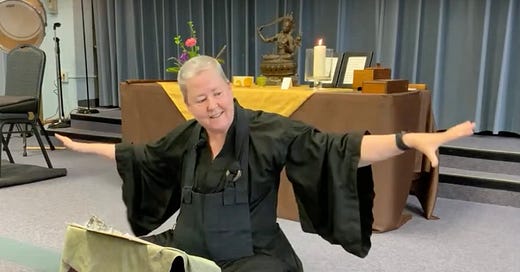



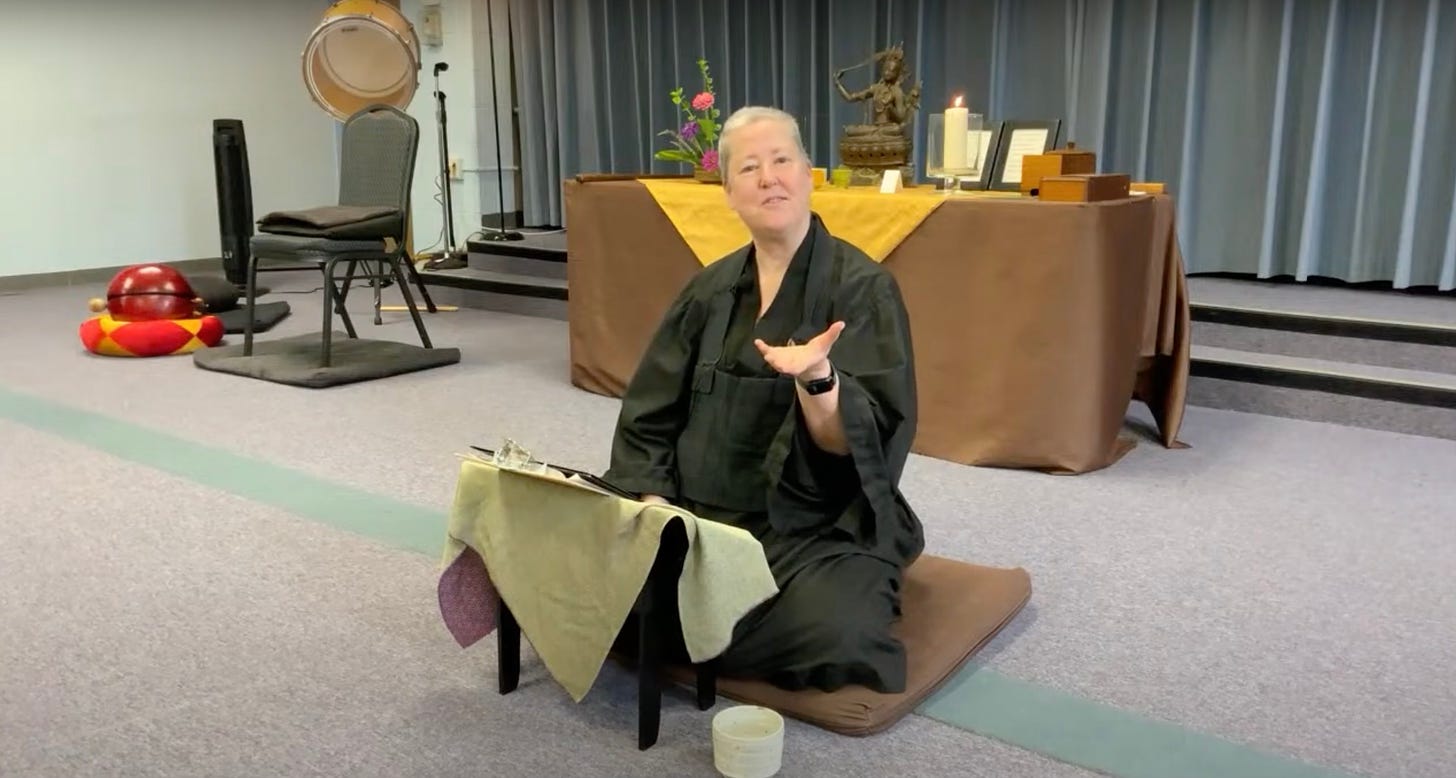
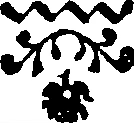
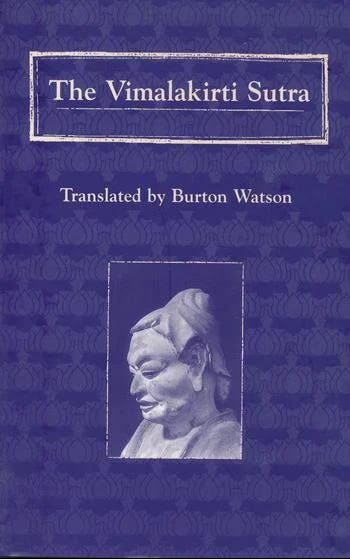
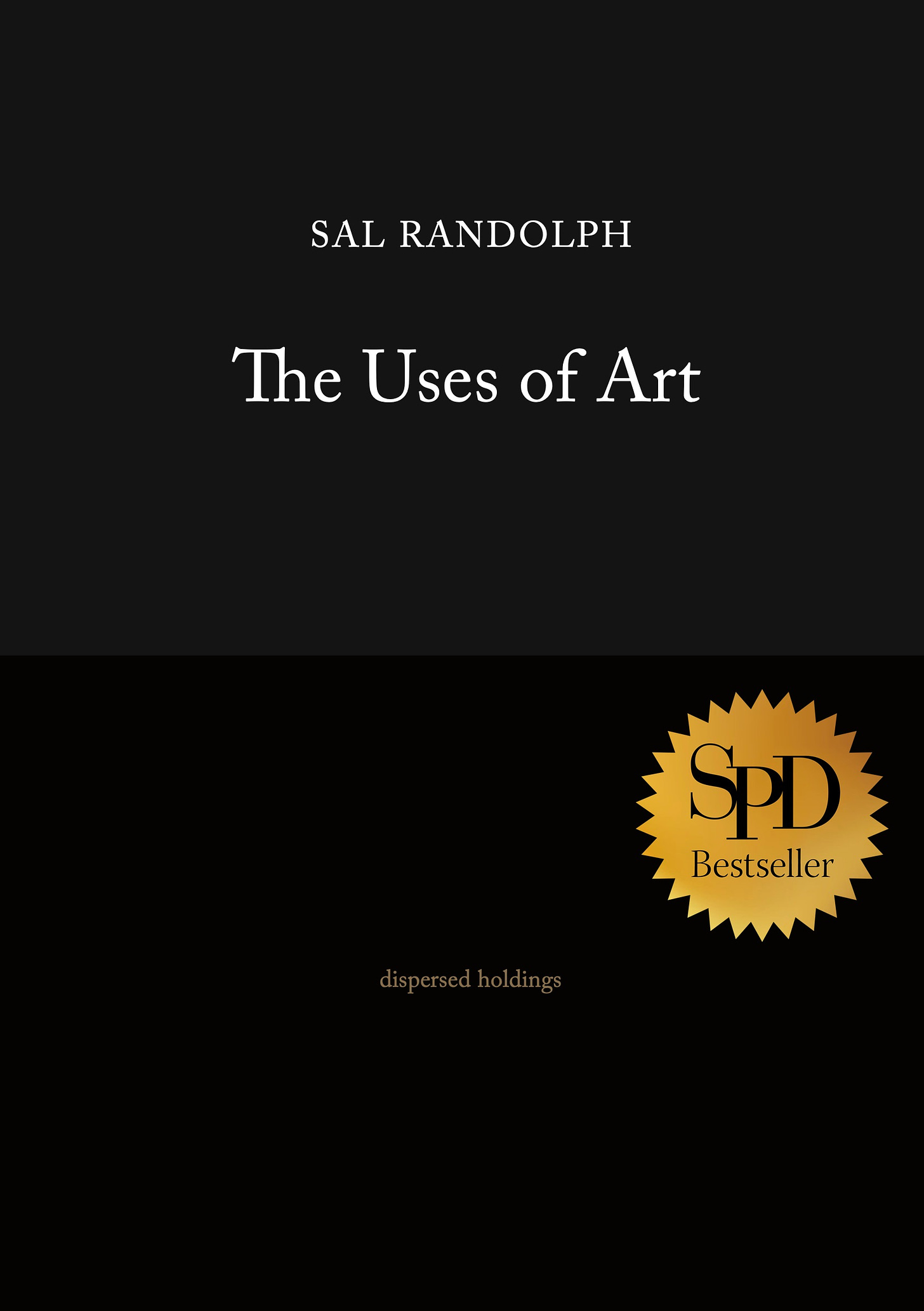
My experience of wonder came from listening to this, as I lie on the floor of the room I've self-isolated in. Covid finally got me, but it gave me the chance to finally rest, and reset, and listen to wonderful mind-expanding things like your talk.
Last night after I read the transcript of your dharma talk, I was sitting in a chair on my front porch watching the evening light do its thing. For the brightest minute or two, when the light pierced the clouds in an infinite number of places and streaked it from within, like veins of quartz in a grey stone, I thought: There is formlessness in form. Just try standing on that cloud with its distinctive shape. Yet there "it" is, directing light in specific pathways. What was true for the cloud was also true of the light within and around the cloud: thingy in shape, form, and hue, and not at all thingy if you wanted to measure it or sit down on it. There's nothing I like so well as a paradox. Thank you for the wondrous account of the fossil-carpet.
Added to Group IV of the Enchanted Book collection 🌺
https://tarapenry.substack.com/p/this-way-to-enchantment-by-books